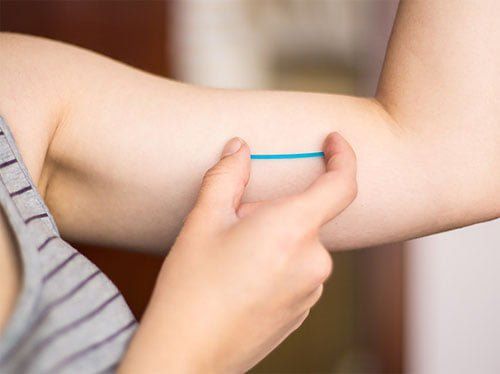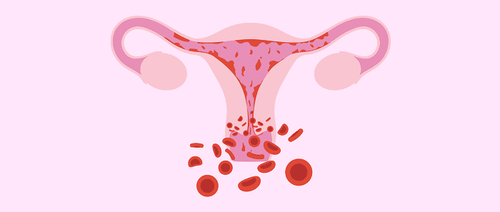This is an automatically translated article.
The article was professionally consulted by Specialist Doctor II Pham Thi Tuyet Mai - Obstetrician and Gynecologist - Department of Obstetrics and Gynecology - Vinmec Hai Phong International General Hospital.1. What is the contraceptive patch?
The birth control patch is a thin piece of about 4.5 cm, applied directly to the skin of the buttocks, abdomen, upper back or upper arms. The patch delivers two hormones, the hormone progestin (norelgestromin) and the hormone estrogen (ethinyl estradiol), which are similar to the hormones the body produces naturally.
2. Mechanism of contraception by patch
The contraceptive mechanism of the patch is to prevent ovulation. If an egg is not released, the sperm cannot fertilize it and a pregnancy cannot be achieved. In addition, the patch also thickens cervical mucus, making it difficult for sperm to reach an egg.
If the patch is applied and changed at the right time, the contraceptive effectiveness of this method is more than 95%. Delaying or forgetting to apply by a week or removing the patch too soon significantly reduces the effectiveness of the patch, so it is possible to still become pregnant.
Trắc nghiệm: Bạn đã biết cách tránh thai an toàn chưa?
Có rất nhiều biện pháp tránh thai an toàn nhưng không phải ai cũng biết được điều đó. Trả lời đúng những câu hỏi trắc nghiệm dưới đây chứng tỏ bạn có kiến thức tốt về các biện pháp ngừa thai an toàn.3. How to use the contraceptive patch
You must use the patch according to your menstrual cycle. The time to start using is one day after the end of the period, paste on the skin and keep in place for 1 week. The next week, on that same day, you peel off the old patch and replace it with a new one. The new patch can be applied to any position, not necessarily the old one. In the 4th week of the cycle, no new patch will be applied and menstruation will occur. The next menstrual cycle is the same as the previous one.
If it is your first time using it, you must use another method of birth control for 7 days to prevent pregnancy. If successive patches are applied and removed at the correct time, no additional methods of contraception are needed. Do not use the patch and the oral contraceptive at the same time.
You can still do your normal activities while wearing the birth control patch. Remember not to peel or change the position of the patch once it has been applied to the skin. Do not use tape to hold the patch, especially do not fix the patch in any way. Doing so can change how much hormone is distributed into the body. The patch is very unlikely to peel and fall off, unless the patch is applied incorrectly.
How to apply: when applying the birth control patch on the skin, pay attention to press the drug side of the patch close to the skin, rub your finger on the patch for about 10 seconds. You can run your finger along the edge of the patch to make sure it stays firmly on the skin.

4. Some notes when using stickers
Do not stick the contraceptive patch on the breast, the area of the skin is red or irritated. It is not recommended to apply the new contraceptive patch on the position of the old contraceptive patch to avoid skin irritation. Do not apply makeup, use creams, lotions, powders or other products on the skin that is applying the patch and the skin that is about to be patched to avoid reducing the adhesion of the contraceptive patch. The birth control patch should not be applied to the affected area of the skin as it can make the condition worse.
5. Side effects of the contraceptive patch
The contraceptive patch has side effects similar to those of oral contraceptives, including a slightly increased risk of blood clots in the legs and lungs and increased blood pressure.
Side effects of the patch are relatively mild and may include: mild skin irritation at the patch site, headache, nipple tightness, unusual vaginal bleeding, slight weight gain, nausea and vomiting, abdominal bloating
Contraindications to the patch are smoking, hypertension, breast or uterine cancer, history of blood clots, uncontrolled diabetes, or history of heart attack or stroke.
In particular, the contraceptive patch does not protect against sexually transmitted diseases such as HIV/AIDS, genital herpes, and gonorrhea.
Please dial HOTLINE for more information or register for an appointment HERE. Download MyVinmec app to make appointments faster and to manage your bookings easily.














